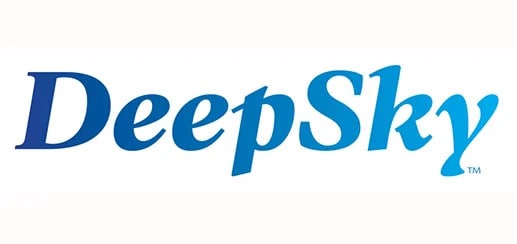The bill of lading is a crucial document in shipping and logistics. It serves as a receipt of goods, a contract of carriage, and a document of title. Understanding its importance and the information it contains can help ensure a successful shipping process. Examine the significance of this shipping document and the reasons it is necessary for your business operations.
What is a Bill of Lading?
A Bill of Lading is a written acknowledgement and contract between the shipper (the person sending the goods) and the carrier (the entity transporting the goods). This document outlines various vital details, including a description of the shipped items, the quantity, packaging details, and any special instructions for handling.
The bill serves as a receipt upon the carrier’s receipt of the goods, proving that the consignment was handed over for transportation. Besides its acknowledgment function, the bill is pivotal in the logistics chain. It acts as a title document, granting ownership of the goods to the party named as the consignee.
This transfer of ownership facilitates smooth transactions in the trading process. The document, therefore, serves a dual purpose—acknowledging the receipt of goods for transportation and establishing legal ownership rights during the shipping process.
What is the Objective of a Bill of Lading?
The primary goal of a Bill of Lading is to provide a clear and comprehensive record of a shipment’s details during the transportation process. It is a foundational document that outlines essential information such as the type and quantity of goods being shipped, packaging details, and handling instructions. This document helps ensure all parties involved understand the shipment’s contents and conditions.
Another key objective of a Bill of Lading is to serve as a legal document that establishes ownership and facilitates the smooth transfer of goods. By specifying the consignee (the person or entity to whom the goods are being shipped), the document plays a crucial role in documenting the change of ownership during the shipping process.
This aspect is particularly significant in international trade, where the transfer of ownership can impact various legal and financial aspects of the transaction. The objective is to provide a comprehensive and legally recognized shipment record, ensuring transparency and facilitating a seamless movement of goods from the shipper to the recipient.
How Many Types of Bills of Lading are There?
Various types of Bill of Lading cater to different aspects of the shipping and logistics process, each serving specific purposes to accommodate diverse trade scenarios.
- Negotiable Bill of Lading: It is a document that allows the goods to be transferred to different parties through endorsement, facilitating the ease of trade and financing.
- Non-negotiable Bill of Lading: A non-negotiable Bill of Lading is issued to a specific consignee, making it non-transferable and often used when the goods’ ownership remains unchanged during transit.
- Through Bill of Lading: This type covers the transportation of goods across multiple modes, simplifying the process by using a single document for an entire journey involving the best shipping carriers.
- Combined Transport Bill of Lading: Tailored for intermodal transportation, this type consolidates the shipping information for goods transported through different modes of transport.
- Clean Bill of Lading: This document signifies that the goods have been received in proper condition, and the carrier is not liable for any damage or discrepancies.
- Claused Bill of Lading: A Claused Bill of Lading includes remarks noting discrepancies, damages, or specific conditions regarding the received goods, providing a detailed account of the shipment’s state.
- Ocean Bill of Lading: Specifically designed for maritime shipments, this type outlines the details of goods transported by sea, acting as a receipt and a title document for the cargo.
What Information Goes into a Bill of Lading?
The document typically includes specifics such as a description of the goods being transported, their quantity, and the packaging details. This description helps all parties involved, including the carrier and recipient, have a shared understanding of the nature and characteristics of the shipped items.
The bill includes key logistical details like the names and addresses of the shipper, consignee, and carrier, as well as the origin and destination of the shipment. This comprehensive information serves as a title document, facilitating legal ownership transfer during the shipping process.
The bill acts as a vital record, ensuring that everyone involved in the transportation chain is informed and in agreement regarding the specifics of the shipped goods and the conditions of their transit.
How to Fill Out a Bill of Lading
Begin by providing the names and addresses of both the shipper and the consignee, clearly identifying the parties involved. Describe the goods being shipped with precision, including their quantity, packaging details, and any specific handling instructions.
Indicate the origin and destination of the shipment, ensuring clarity on the logistical aspects. Include the date of shipment and the preferred method of transportation. Both the shipper and carrier should sign the document to acknowledge its accuracy.
Taking care to fill out the bill precisely helps establish a comprehensive record, ensuring that all parties are on the same page regarding the shipment’s specifics.
Understand Bill of Lading and Start Taking Charge of Your Shipment
Are you prepared to handle the shipping process with assurance? To take command of your local or international shipments, familiarize yourself with the details of the document. Contact us right now with any inquiries or for individualized advice. Together, let’s ensure a smooth shipping experience for you.
FAQs about Bill of Lading
Who is Responsible for Preparing a Bill of Lading?
The shipper is responsible for preparing the bill. This document is crucial for accurately documenting the shipment details and ensuring a smooth transfer of goods.
Is it Necessary to have a Bill of Lading for Every Shipment?
The bill is essential for virtually every shipment. It is a legal document detailing the contents, conditions, and terms of the shipment, providing clarity and protection for both the shipper and the carrier.
What is the Difference Between a Bill of Lading and an Invoice?
While both documents relate to a shipment, a Bill of Lading is a transport document detailing the goods being shipped, their destination, and conditions, while an Invoice is a financial document specifying the shipping cost of the goods and terms of payment. The bill focuses on the shipment’s logistics, while the invoice centers around the financial aspect of the transaction.















 View More
View More